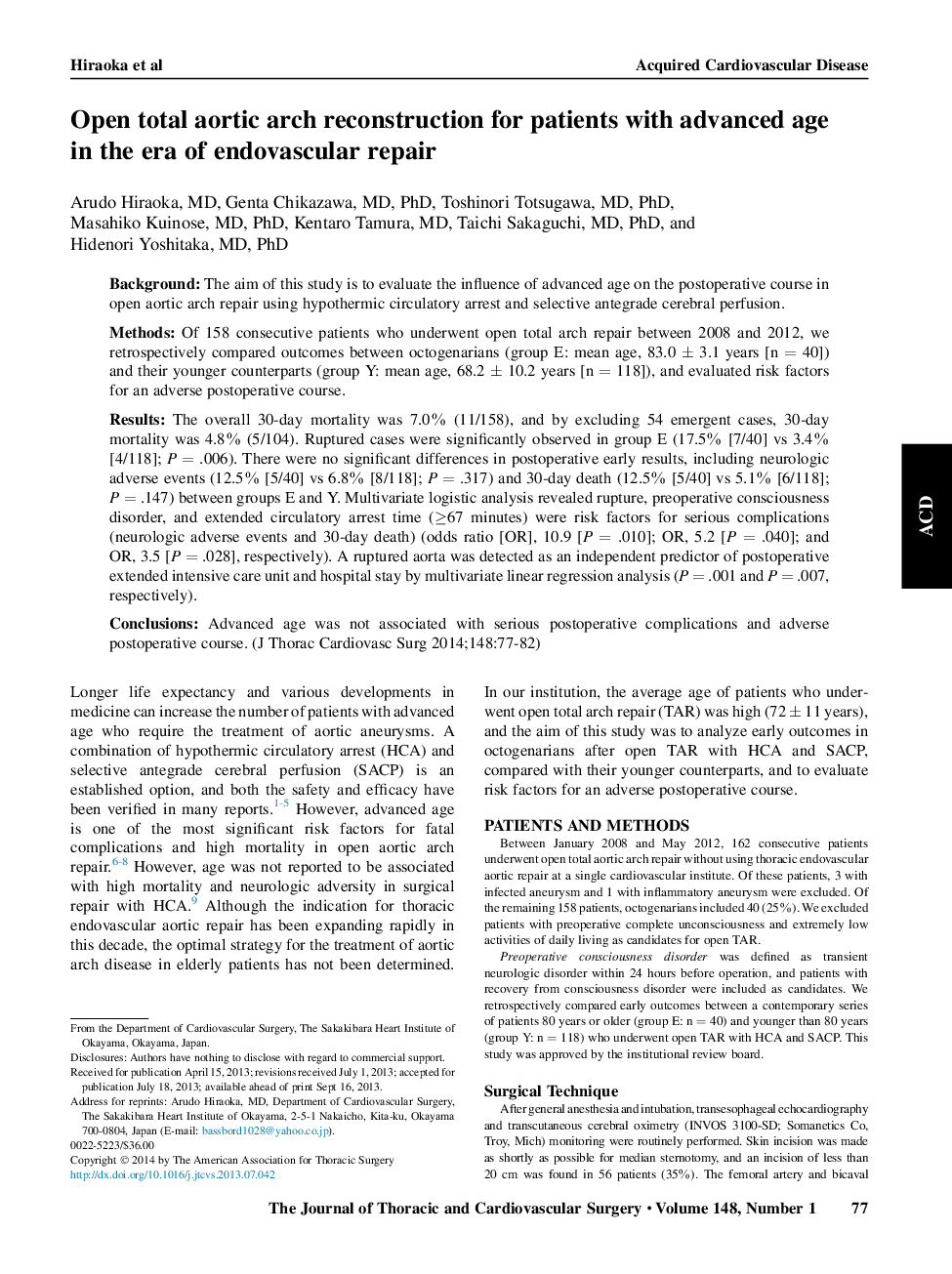| Article ID | Journal | Published Year | Pages | File Type |
|---|---|---|---|---|
| 2980747 | The Journal of Thoracic and Cardiovascular Surgery | 2014 | 6 Pages |
BackgroundThe aim of this study is to evaluate the influence of advanced age on the postoperative course in open aortic arch repair using hypothermic circulatory arrest and selective antegrade cerebral perfusion.MethodsOf 158 consecutive patients who underwent open total arch repair between 2008 and 2012, we retrospectively compared outcomes between octogenarians (group E: mean age, 83.0 ± 3.1 years [n = 40]) and their younger counterparts (group Y: mean age, 68.2 ± 10.2 years [n = 118]), and evaluated risk factors for an adverse postoperative course.ResultsThe overall 30-day mortality was 7.0% (11/158), and by excluding 54 emergent cases, 30-day mortality was 4.8% (5/104). Ruptured cases were significantly observed in group E (17.5% [7/40] vs 3.4% [4/118]; P = .006). There were no significant differences in postoperative early results, including neurologic adverse events (12.5% [5/40] vs 6.8% [8/118]; P = .317) and 30-day death (12.5% [5/40] vs 5.1% [6/118]; P = .147) between groups E and Y. Multivariate logistic analysis revealed rupture, preoperative consciousness disorder, and extended circulatory arrest time (≥67 minutes) were risk factors for serious complications (neurologic adverse events and 30-day death) (odds ratio [OR], 10.9 [P = .010]; OR, 5.2 [P = .040]; and OR, 3.5 [P = .028], respectively). A ruptured aorta was detected as an independent predictor of postoperative extended intensive care unit and hospital stay by multivariate linear regression analysis (P = .001 and P = .007, respectively).ConclusionsAdvanced age was not associated with serious postoperative complications and adverse postoperative course.
